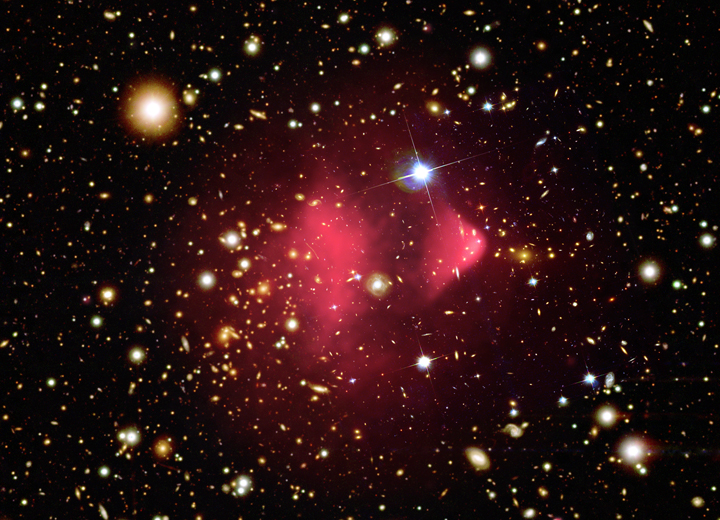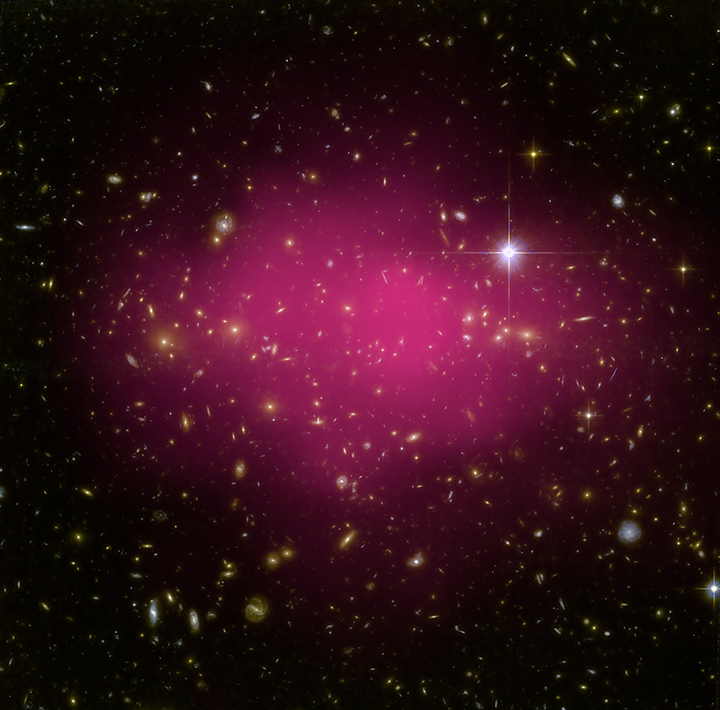Although the evidence for dark matter is wide and deep, it is nevertheless indirect, and is based on the assumption that the laws of motion and gravity as formulated by Newton and expanded by Einstein apply. An alternative possibility is that a modification of gravity can explain the effects attributed to dark matter. The basic idea is that at very low accelerations, corresponding to large distances, the usual law of gravitation is modified.
The most studied of these modifications is called Modified Newtonian Dynamics, or MOND. According to this hypothesis, the force of gravity falls off more slowly at low accelerations (inversely as the distance rather than inversely as the square of the distance). With this prescription, less mass is required to explain the observed rotation of the outer edges of galaxies or the pressure of the hot gas in clusters of galaxies than in the Newton-Einstein theory. By adjusting the parameters of the theory, the need for dark matter can be eliminated.
Although MOND has had some success in explaining observations of galaxies, it and other theories that involve modifying the law of gravity have been severely challenged by observations of the galaxy cluster 1E0657-56, a.k.a. the Bullet Cluster.
The accompanying image shows hot X-ray producing gas (pink), and optical light from stars in the cluster galaxies (orange and white). The X-ray observations show that the Bullet Cluster is composed of two large clusters of galaxies that are colliding at high speeds.
Using the gravitational lensing technique, astronomers have deduced that the total mass concentration in the clusters (blue) is separate from that of the hot gas. This separation was presumably produced by the high-speed collision in which the gas particles collided with each other, while the stars and dark matter were unaffected. It cannot be explained by an altered law of gravity centered on the hot gas particles, and provided direct evidence that most of the matter in the Bullet Cluster is dark matter. Although such violent collisions between clusters are rare, another one (MACS J0025.4-122) shows the same effect.







